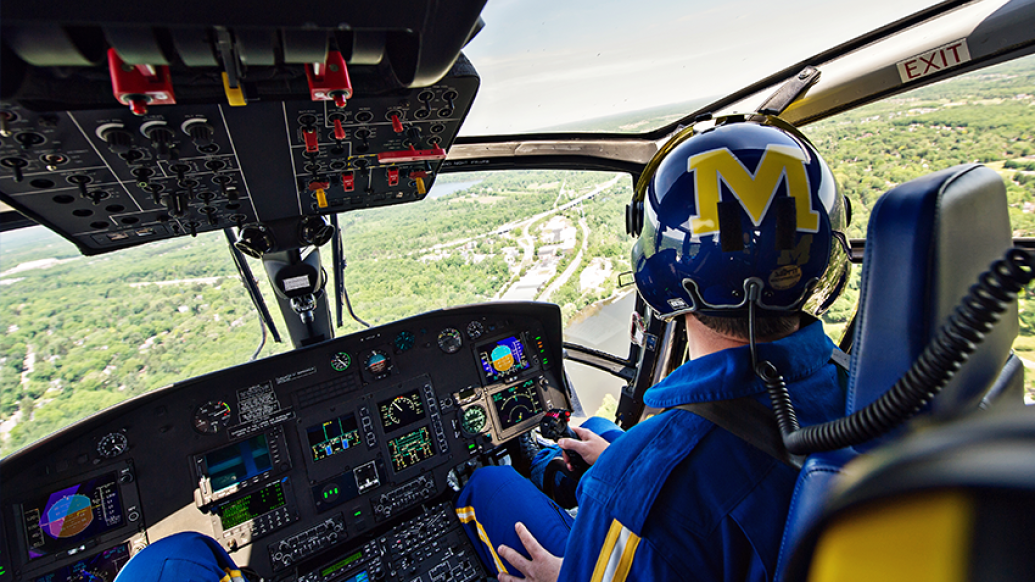U-M Survival Flight, the aircrew in maize and blue, plays a critical role in situations from accidents to organ transplants.
5:52 PM
Author |

It's a bird … it's a plane … it's Survival Flight!
Survival Flight is the University of Michigan Health System's air medical transport program. It's a fleet made up of three identical helicopters and a fixed-wing jet.
The helicopters and jet are used for similar transports, but specific situations help decide which aircraft will be used.
The jet is best for longer trips and inclement weather conditions, such as icing or thunderstorms. The helicopters can complete shorter trips much faster than the jet because there is no ground transportation time from an airport to the hospital.
For Michiganders, it's not uncommon to see the maize and blue helicopter overhead, but do you know what the Survival Flight team is really up to when flying by at 175 mph?
Here are five things you might not have known about the fleet and its crew:
1. Survival Flight has flown approximately 7.9 million miles in the past 32 years. That's the distance from Earth to the moon 34 times.
Those miles include trips all over Michigan and beyond to pick up and deliver patients to care facilities. Survival Flight will celebrate its 33rd anniversary soon — and is going strong.
2. The helicopter is for more than critically injured patients in accidents.
Most people assume when they see the Survival Flight helicopter that it's headed to the scene of a vehicle crash. That is not always the case. The aircraft are sometimes called to the scene of a vehicle accident, and they also pick up patients in rural areas, transfer patients from hospital to hospital more quickly and obtain transplant organs for the U-M Transplant Team.
3. Each flight staff member has a voice-activated helmet equipped with night vision goggles. And those team members are international award winners.
The Survival Flight team comprises 24 registered nurses, 10 communication specialists, seven full-time mechanics (with two on call 24 hours a day), nine helicopter pilots and eight fixed-wing pilots.
The team has won the Association of Air Medical Services SIM Cup competition six times in the past 13 years.
4. Think your vehicle is a gas guzzler? The Survival Flight fixed-wing aircraft consumes 200 gallons of fuel per hour.
The fixed-wing aircraft can fly as high as 45,000 feet and more than 500 mph. Two airline transport pilots crew the aircraft every flight.
5. Every piece of Survival Flight aircraft is tracked using satellites, and updated positions are sent every 60 seconds.
The Survival Flight communication specialists monitor seven radios and nine phone lines and take more than 4,000 aircraft position reports each year. Everything on each aircraft is weighed and calculated before takeoff to make sure everything operates smoothly. Roger that.
Want to learn more about the Survival Flight team? Visit them on Facebook.

Explore a variety of healthcare news & stories by visiting the Health Lab home page for more articles.

Department of Communication at Michigan Medicine
Want top health & research news weekly? Sign up for Health Lab’s newsletters today!





